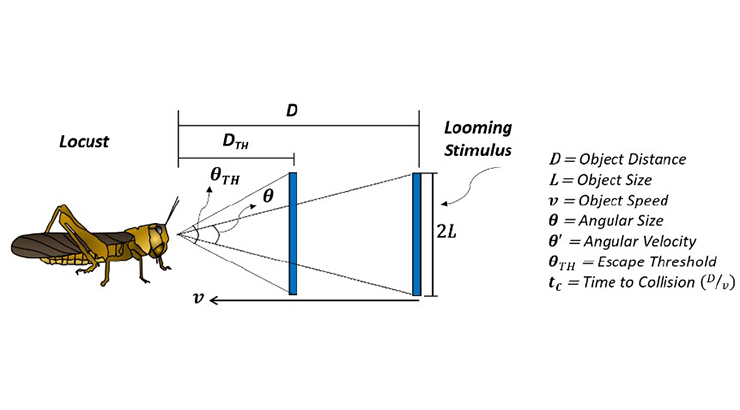An Ultra-Low Power Biomimetic Collision Detector
ID# 2020-5048
Technology Summary
This technology is an ultra-low power collision detector inspired from the collision detection neuron inside a locust called the Lobula Giant Movement Detector (LGMD). The device consists of a monolayer MoS2 photodetector stacked on top of a non-volatile and programmable floating gate memory architecture, both combined, imitates the escape response of the LGMD neuron, to an approaching object. This is achieved at a frugal energy expenditure of a few nano-joules and at the same time offers orders of magnitude benefit in device footprint.
Application & Market Utility
Neuromorphic computational devices are able to offer a low cost, low energy alternative to supercomputing by mimicking components of a biological nervous system. By taking inspiration from nature, such technology can enable high-performing functionality at a fraction of the cost (energy, component size/number, computational steps/complexity, etc.) of traditional methods. This type of efficiency will become ever more important as vast numbers of sensors are deployed to any number of devices, including IoT, autonomous vehicles, micro-devices, and defense applications.
Next Steps
This technology is patent pending. The research team seeks collaboration for further development and licensing opportunities.

